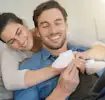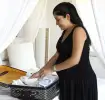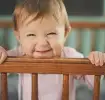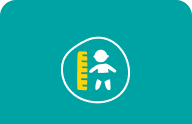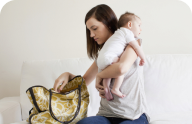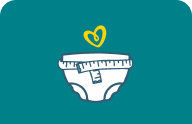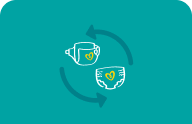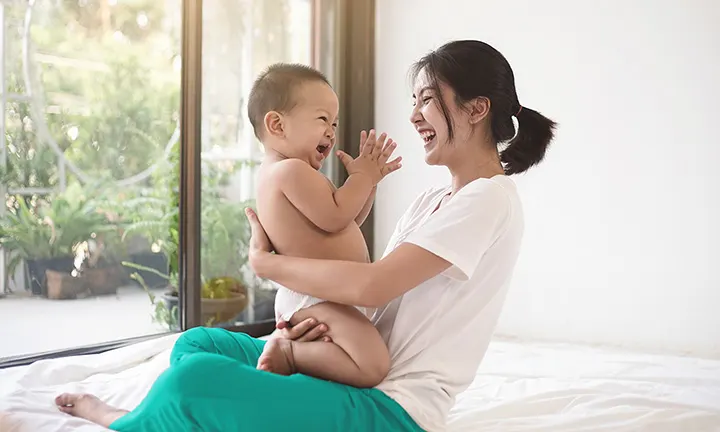Explore
Diapering
Tools you might be interested in
When Do Babies Start Clapping, Waving, and Pointing?
As babies grow, they achieve various developmental milestones that mark progress in their physical, social and cognitive abilities. Among these milestones are the cute gestures of clapping, waving, and pointing. These actions are not only adorable, but they also signify your little one’s developing motor skills, social understanding, and communication abilities. Read on to discover at what age babies typically start to clap, wave, and point, and explore ways to encourage these behaviors, and what to do if you suspect they’re not reaching certain milestones.
When Do Babies Clap?
This cute gesture often prompts the question, “When do babies start clapping?” from curious parents. Every child develops at their own rate, but in general, babies usually begin to clap around 8 to 12 months of age. The milestone of clapping is an exciting one, as it’s one of the first signs that your baby is starting to communicate and engage with others. Clapping is also an indicator of your baby’s developing fine motor skills and hand-eye coordination. It often starts as an imitation of others or an exploration of objects as they pick them up, shake them, or bang them together, before becoming a spontaneous expression of joy or excitement.
When Do Babies Wave?
Waving is another important gesture that babies also usually start to do when they’re between 8 months and 12 months of age. It’s a fundamental social skill, signaling your baby’s growing awareness of others and their ability to communicate intentionally. Initially, your baby might randomly open and close their hand or mimic your waving. Over time, this evolves into a deliberate greeting or farewell gesture.
When Do Babies Point?
Another big milestone in a baby’s development is pointing. So, when do babies point with one finger? This typically emerges when babies are around the age of 8 to 12 months. Before they reach 2 years of age, they may be pointing to specific objects to ask for something, show you something or to get your help or attention.
Pointing is a clear sign that your baby is starting to communicate their interests, needs, or desires. Pointing involves not just the physical action but also the social and cognitive understanding that they’re directing your attention to something specific. It marks an important step in language development and social interaction.
How to Encourage Waving, Clapping, and Pointing
Encouraging your little one to develop gestures such as clapping, waving, and pointing is all about interaction and practice. Here are some tips to help encourage and teach your baby how to clap, wave, and point:
Model the actions. Regularly clap, wave, and point during your interactions. For example, say “hello” or “bye-bye” when you wave, and say “yes” and “no” when nodding and shaking your head. Your baby is likely to imitate you.
Give them toys. Use toys and items that interest your baby and encourage them to point or clap in excitement. Playing with toys such as blocks can help them develop their fine motor skills and hand-eye coordination.
Read to them. while reading to them, demonstrate how to turn the pages of a book. You can also point to pictures of objects or animals in a book and say the word to your baby. In time, they’ll be able to connect the words with the objects and may be able to point to a ball when you ask “Where is the ball?”
Celebrate and encourage attempts. Show excitement and praise your little one’s attempts at these gestures, even if they’re not perfect.
Incorporate music and singing. Songs with repetitive words and actions, like clapping or waving, are great for encouraging these behaviors.
Be patient and supportive. Every child is different and they all develop at their own pace. Provide plenty of opportunities for practice and interaction without putting pressure on your baby.
Baby Gestures Month by Month
While the ages mentioned provide a general guideline, it’s important to remember that all babies develop at their own pace. Here’s a month-by-month overview of what your baby might achieve in their first couple of years:
Birth to 2 months. In the initial weeks, your baby will likely start to develop basic baby reflexes and begin to explore the world around them. Their gestures are mostly reflexive, such as sucking, grasping, and startling (moro reflex). Although these actions are instinctual, they lay the groundwork for future voluntary movements.
2 to 4 months. Around this age, your baby may become more expressive and start to develop a social smile. They may begin to respond to familiar faces and may coo or babble as a form of early communication. You’ll likely notice them starting to follow objects and people with their eyes, which is a precursor to the pointing gesture.
4 to 7 months. Your baby may start to show more control over their movements and may reach out to grab objects using their fingers and thumbs in a claw-like- grip. Reaching and grasping are early signs of hand-eye coordination and a desire to interact with their environment. They also begin to babble, combining vowels and consonants, which is an important step towards verbal communication. Laughing and squealing become part of their way to engage with others, indicating an understanding of social interaction.
8 to 12 months. Your little one may start to develop better control over their hands and fingers and may develop their pincer grasp around 9 months of age. This is setting the stage for gestures and milestones like clapping and waving. They may begin clapping and waving during this period, and may also shake their head to say “no.” These gestures are often responses to social interactions or expressions of joy.
12 to 15 months. Pointing becomes more common in this age range, especially as a way to communicate their interest or to request something.
What to Do If Your Baby Isn’t Waving, Clapping, or Pointing
If you’ve noticed that your baby is not waving, clapping, or pointing at 12 months or within the typical developmental timeline, it’s understandable to feel concerned. However, it’s important to remember that every child develops at their own pace. If your baby isn’t displaying one of these gestures, take note of other milestones. They might be focusing on mastering other skills, such as crawling, babbling, or fine motor activities like grasping objects. Sometimes, babies develop one area of skill quicker than another. You can also use the methods of encouragement and interaction listed above. If you have concerns about your baby’s development, especially if they’re not meeting several milestones or you notice a loss of skills they once had, consult with your healthcare provider. They’ll likely conduct a developmental screening to assess your baby’s progress and discuss the next course of action. It is vital that your baby receives all of their regular well child visits, as your healthcare provider performs developmental surveillance and screening at each visit.
What Comes After Waving, Clapping, and Pointing
After mastering waving, clapping, and pointing, babies continue to develop more advanced communication and motor skills. These next steps are crucial as they form the foundation for complex language and social interactions, as well as fine and gross motor skills development. Here’s what generally comes next in their developmental journey, between 12 and 24 months:
After mastering clapping and pointing, children work on refining their fine motor skills, such as holding a crayon or spoon, stacking blocks, or turning pages in a book.
They can follow a simple command and understand basic requests.
By two years of age, their vocabulary expands to 50 words and they’ll likely be able to use two-word sentences.
They will start repeating words they overhear.
They may help themselves get dressed and undressed with your help.
They imitate more complex actions, such as pretending to talk on the phone or stirring a pot.
Their ability to engage in play with others may improve and they may be excited to play with other children.
The Bottom Line
Clapping, waving, and pointing are more than just cute behaviors; they’re key milestones in your baby’s development. By understanding when these gestures typically appear and how to encourage them, you can support your child’s growth, development, and communication skills. Remember, each baby is unique, and milestones may vary. Always consult with your healthcare provider if you have any concerns about your child’s development and be sure that your baby is up to date on well child visits. While your little one is wowing you with their adorable gestures and developments, they’ll also be using a lot of diapers. If you haven’t already, download our Pampers Club app to get rewards on all those diaper purchases.
How We Wrote This Article The information in this article is based on expert advice found in trusted medical and government sources, such as the American Academy of Pediatrics and the American College of Obstetricians and Gynecologists. You can find a full list of sources used for this article below. The content on this page should not replace professional medical advice. Always consult medical professionals for full diagnosis and treatment.

